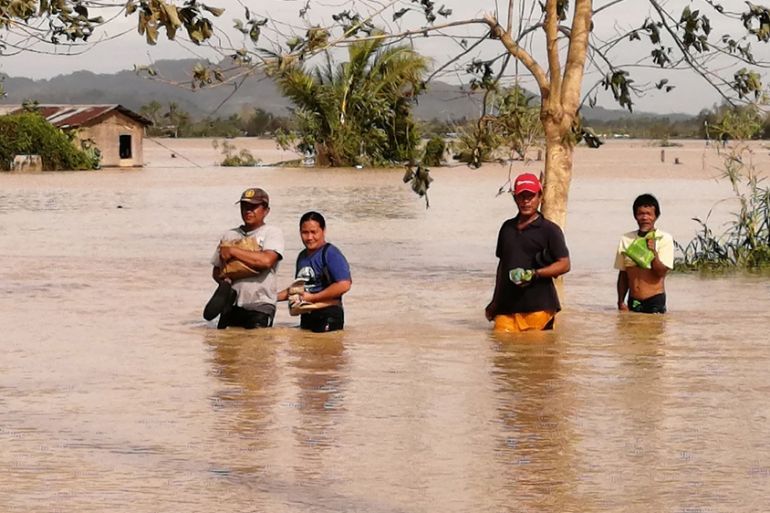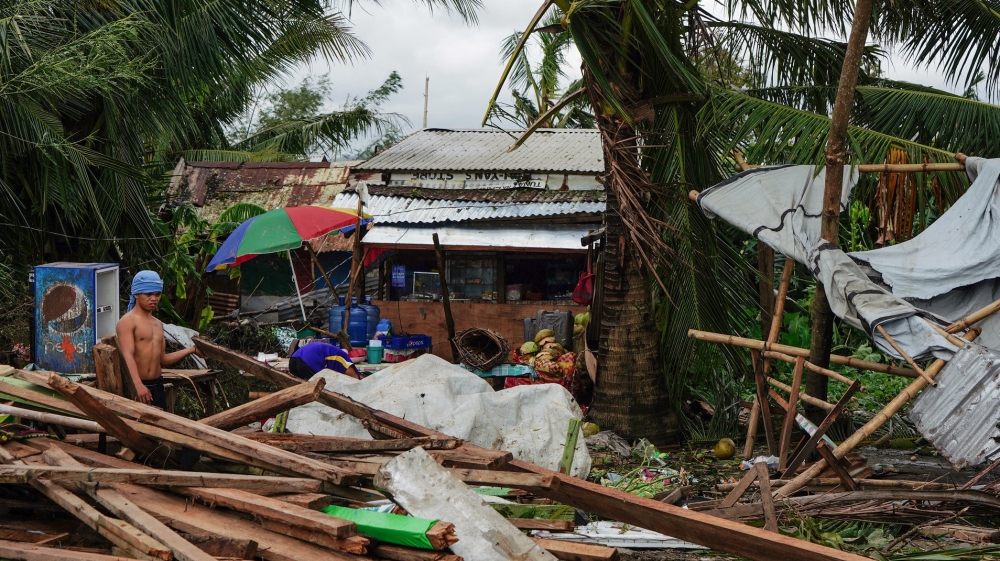Typhoon Phanfone kills dozens in the Philippines
At least 28 people confirmed dead, 12 still missing after typhoon hits the country during Christmas Day.

At least 28 people have been confirmed dead while 12 others remain missing on Friday after Typhoon Phanfone battered several central Philippine islands on Christmas Day, forcing at least once province to declare a state of calamity.
According to news reports, most of the fatalities were from the province of Iloilo, where at least 13 people were reported killed. The other fatalities were from the several other provinces also hit by Phanfone.
Keep reading
list of 3 itemsTyphoon Tisoy hits the Philippines
‘It can lift cars’: Millions at risk from super typhoon
Authorities on Friday confirmed 28 people had died, up from 16 on Thursday, as information came in from badly hit areas where internet and mobile phone networks had been cut.
“The likelihood is present that the casualty count will still increase. We’re hoping against it,” national disaster agency spokesman Mark Timbal told AFP news agency.
He said at least 12 people were still listed as missing.
Most of the deaths reported by police and local officials were due to drowning, falling trees and accidental electrocution.
The province of Leyte, which was the first to bear the brunt of the typhoon, declared a state of calamity and reported damage to fisheries, livestock and crops worth close to $1m.
More than 58,000 people were also forced to evacuate across the several provinces leading up to the typhoon, which hit as the predominantly Catholic nation was celebrating Christmas.
Images posted on social media showed some areas in Capiz and Iloilo provinces under water. Thousands were forced to evacuate before the typhoon.
Phanfone is expected to leave the Philippines’ area of responsibility on Saturday morning.
The storm weakened as it blew into the South China Sea with sustained winds of 120 kilometers (74 miles) per hour and gusts of 150 kph (93 mph), after lashing island after island with fierce winds and pounding rain on Christmas Day, the weather agency PAGASA said.
Balasan, Iloilo suffers from heavy flooding due to strong rains brought by Typhoon Ursula on Wednesday, December 25. #UrsulaPH | via @AlertsPeapic.twitter.com/DA3qSBzh9p
— MovePH (@MovePH) December 25, 2019
Phanfone also hit Boracay, Coron and other holiday destinations that are famed for their white-sand beaches and popular with foreign tourists.
The airport at Kalibo, which services Boracay was badly damaged, according to a Korean tourist who was stranded there.

Though weaker, Phanfone was tracking a similar path as Super Typhoon Haiyan – the country’s deadliest cyclone on record which left more than 7,300 people dead or missing in 2013.
The Philippines is the first significant landmass facing the Pacific cyclone belt.
As such, the archipelago is hit by an average of 20 storms and typhoons each year, killing many people, wiping out harvests, homes and other infrastructure, and keeping millions perennially poor.
A July 2019 study by the Manila-based Asian Development Bank said the more frequent storms lop 1 percent off the Philippine economic output, while the stronger ones cut output by nearly 3 percent.